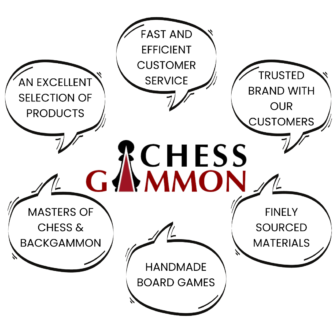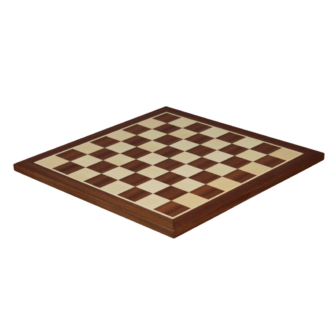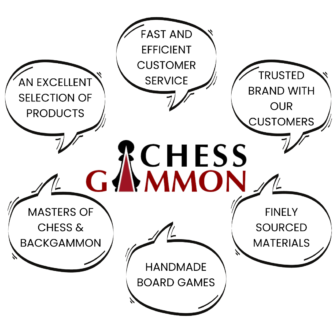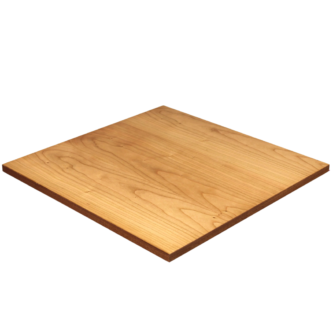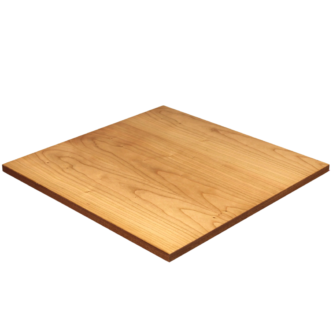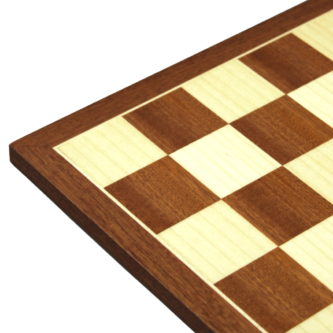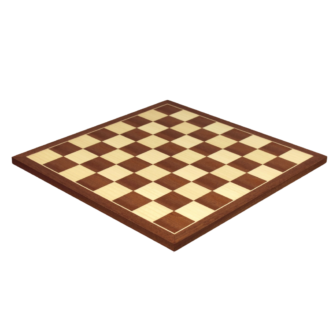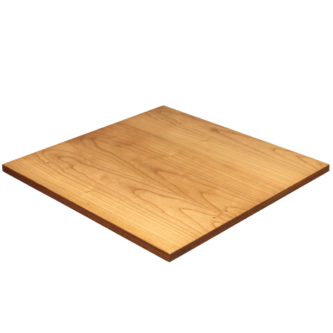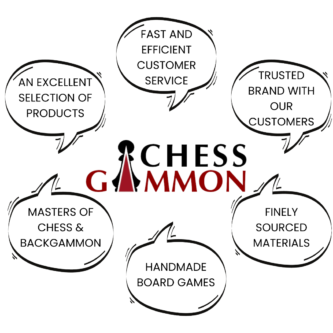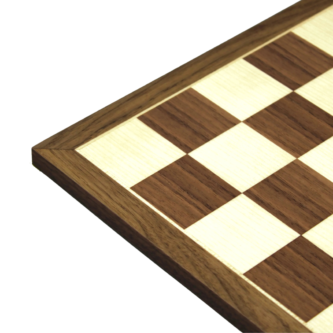Executive Range Chess Board
Chessboard
In the world of intellectual pursuits and strategic thinking, few games rival the timeless allure of chess. At the heart of this captivating game lies the foundation of every move, every gambit, and every brilliant strategy—the chessboard. A simple square grid of alternating colours, the chessboard is the hallowed arena where battles between kings and queens, knights and bishops, unfold with precision and foresight.
Definition of a Chessboard:
A chessboard is a checked game board consisting of 64 squares arranged in an 8×8 grid. Traditionally, these squares alternate between light and dark colors, commonly white and black, creating an aesthetically pleasing and easily distinguishable pattern. Each square provides a designated space for the placement of chess pieces, ultimately determining the path to victory or defeat for the players engaged in this mental duel.
Importance of the Chessboard in Chess:
The chessboard serves as the canvas upon which the intricate tapestry of chess strategy is woven. Its carefully designed layout and specific arrangements govern the movement and interactions of the chess pieces. With every piece’s position and mobility inextricably linked to the chessboard, mastering the game necessitates a deep understanding of this critical component.
Beyond its functional significance, the chessboard carries a symbolic weight, evoking notions of intellectual challenge and artistic beauty. Each game played on the chessboard becomes a clash of minds, a battle of wits where players must envision moves ahead and anticipate their opponent’s responses. Thus, the chessboard becomes a metaphor for life’s challenges, where calculated decisions and adaptability are vital for success.
Purpose of the Article:
In this article, we embark on a journey to explore the world of the chessboard, unearthing its historical roots, delving into its significance within the game of chess, and uncovering the diverse range of chessboards found across cultures and eras. We will delve into the anatomy of the chessboard, understand its setup and notation system, and explore various types of chessboards that cater to different preferences and needs.
Furthermore, we’ll touch upon the artistic aspects of chessboards, discovering how they transcend mere gaming tools to become collectors’ items and cherished works of art. Throughout this exploration, we will learn how the chessboard’s legacy extends far beyond the realm of chess, influencing literature, popular culture, and even serving as a symbol of broader life principles.
Whether you’re a seasoned chess enthusiast seeking to deepen your appreciation for the game’s foundation or a curious newcomer eager to learn more about the enchanting world of chess, this article aims to provide you with a comprehensive and insightful glimpse into the captivating domain of the chessboard. So, let us embark on this intellectually stimulating journey, where the squares come alive with possibilities, and the chessboard becomes a gateway to a realm of infinite strategic imagination.
History of the Chessboard:
Origin of Chess and the Early Chessboards:
The origins of chess can be traced back to ancient India, where its earliest predecessor, known as Chaturanga, emerged during the Gupta Empire in the 6th century AD. Chaturanga featured four different types of military units, representing infantry, cavalry, elephants, and chariots—elements that eventually evolved into the modern-day chess pieces we know today.
The early chessboards used for Chaturanga were not the familiar 8×8 grids we associate with modern chess but rather varied in size, ranging from 9×9 to 13×13 squares. These boards were often made from cloth, wood, or stone, and the pieces were crafted from materials like ivory or wood.
Evolution of Chessboards Over Time:
As chess spread to Persia and the Islamic world, it underwent significant changes, including modifications to the rules and the introduction of new pieces. During this period, the chessboard began to evolve into its recognizable 8×8 form. The word “chess” itself is derived from the Persian term “shah” (king), which eventually became “shatranj” (chess) in Arabic.
The game of shatranj gained popularity in the Islamic Golden Age, and it was through the Arab traders that chess reached Europe during the 9th century. As it spread across different regions, the design of chessboards varied, reflecting the local craftsmanship and materials available.
By the 11th century, chessboards in Europe became predominantly 8×8 grids, and the modern chess pieces, with their distinctive moves, were firmly established. During this time, chessboards were often crafted from wood, using intricate inlay work and decorative elements to enhance their appearance.
Influence of Cultural and Regional Variations on Chessboards:
The cultural diversity of regions where chess gained popularity contributed to an array of unique chessboard designs. In Asia, particularly China and Japan, different variations of chess were developed with their own distinctive boards, often emphasizing intricate artwork and calligraphy.
In Europe, various historical chess sets have been discovered, showcasing the regional aesthetics and artistic styles of different periods. Some boards were exquisitely crafted from precious materials, highlighting the game’s association with nobility and intellectual pursuits.
In India, where chess originated, the traditional chessboard, known as an “ashtapada,” is still used in some areas. Ashtapada refers to an 8×8 board with a checked pattern, preserving the ancient roots of the game.
Even today, the diverse cultural influence on chessboards continues. Many countries have their own styles and materials for crafting chessboards, catering to collectors and players alike. From ornate and handcrafted sets to sleek and modern designs, the chessboard has adapted to contemporary tastes while maintaining its timeless allure.
In conclusion, the history of the chessboard is intricately woven with the evolution of the game itself. From its humble origins on the Indian subcontinent to its global popularity today, the chessboard remains an enduring symbol of strategic thinking, intellectual pursuit, and the fascinating interplay of culture and history.
Anatomy of a Chessboard:

Standard Chessboard Specifications:
The standard chessboard is a square grid consisting of 64 squares arranged in an 8×8 pattern. Each square on the chessboard is identified by a unique combination of a letter and a number. The horizontal rows are labelled from ‘a’ to ‘h,’ starting from the bottom of the board, while the vertical columns are numbered from 1 to 8, beginning from the left side.
The chessboard’s alternating colours, typically white and black, create the checked pattern that aids players in identifying and distinguishing squares during the game. The contrasting colours also enhance the visual appeal of the board and contribute to its iconic look.
The official dimensions of a standard chessboard dictate that each square should be of equal size, resulting in an overall dimension of approximately 44.45 centimetres (17.5 inches) on each side. These standardized specifications ensure consistency and fairness across all chess competitions and games.
Material and Construction of Chessboards:
Chessboards are crafted from a wide range of materials, each offering its own unique attributes and aesthetics. Wood remains one of the most popular choices for crafting chessboards due to its natural beauty and durability. High-quality chessboards are often made from fine woods like ebony, rosewood, maple, or walnut. Exquisite inlay work or marquetry is sometimes used to create intricate patterns or designs on the board’s surface.
For more practical and portable chess sets, materials like plastic, vinyl, or cardboard are commonly used. These materials provide a lightweight and affordable option for casual play and travel.
In recent years, electronic chessboards have also gained popularity. These boards often consist of sensors beneath the squares to detect piece movements, enabling players to engage in chess games with computer opponents or online opponents. Electronic boards typically come with built-in displays or can be connected to computers or smartphones for a more interactive experience.
Chessboard Notation System:
The chessboard notation system is a standardized method used to record and communicate chess moves. It is an essential tool for players, coaches, and spectators to analyze and review games. The notation system builds on the identification of each square by its unique letter and number combination.
To record a move, the player specifies the piece being moved and the destination square. For example, if a player moves their knight from its starting position to the square e4, the move is notated as “Nf3,” where ‘N’ represents the knight and ‘f3’ indicates the destination square.
Additionally, specific symbols are used to signify special moves like captures (‘x’), check (‘+’), checkmate (‘#’), pawn promotion (‘=Q’, ‘=R’, ‘=B’, ‘=N’ for promoting to queen, rook, bishop, or knight respectively), and castling (‘O-O’ for kingside castling and ‘O-O-O’ for queenside castling).
Chess notation allows players to analyse and discuss games, study past encounters, and learn from their own and others’ moves. It has become an integral part of chess culture, facilitating communication and understanding in the world of this timeless game.
In conclusion, understanding the anatomy of a chessboard is fundamental for any chess enthusiast. From its standard specifications and distinct materials to the significance of the notation system, the chessboard forms the foundation of every game, inviting players into a world of strategic thinking and endless possibilities.
Chessboard Setup and Notation:
How Chess Pieces are Arranged on the Chessboard:
Before the excitement of a chess game can begin, the chess pieces must be carefully arranged on the chessboard following a specific setup. Each player starts with 16 pieces: one king, one queen, two rooks, two knights, two bishops, and eight pawns.
The setup for each player is as follows:
The back rank (the row closest to the player) from left to right:
Rook (a1) – Knight (b1) – Bishop (c1) – Queen (d1) – King (e1) – Bishop (f1) – Knight (g1) – Rook (h1)
The second rank (the row behind the pawns) from left to right:
Pawns (a2, b2, c2, d2, e2, f2, g2, h2)
This initial arrangement places the pieces in a well-defended position while allowing the pawns to act as the first line of defence.
Understanding Algebraic Notation:
Algebraic notation is the standard system used to record chess moves, making it easier to communicate and analyse games. It uses a combination of letters and numbers to represent each square on the chessboard, along with special symbols for certain actions.
Each square is identified by a letter representing the column and a number representing the row. The columns are labelled from ‘a’ to ‘h’ (left to right), and the rows are numbered from 1 to 8 (bottom to top). Therefore, the bottom-left square is ‘a1,’ and the top-right square is ‘h8.’
To record a move, you specify the piece being moved and the destination square. For example:
Pawn to e4: e4
Knight to f3: Nf3
Bishop captures a pawn on c5: Bxc5
Queen moves to d4 with check: Qd4+
King castles kingside: O-O
Importance of Chess Notation in Recording Games:
Chess notation serves as a crucial tool for documenting and studying chess games. Whether for personal analysis or sharing with others, using algebraic notation allows players to reconstruct a game move by move.
Chess notation aids in identifying patterns, analysing strategic decisions, and recognizing mistakes or missed opportunities. It enables players to study both their own games and those of masters, improving their skills and understanding of the game.
Furthermore, chess notation is essential for chess tournaments, where games are recorded to ensure fairness, settle disputes, and provide a historical record of the event. Notation also plays a vital role in the publication of chess books, magazines, and online resources, making it possible to share games and insights with a wider audience.
Overall, chess notation is a valuable aspect of the game, enhancing its educational and analytical aspects. Embracing algebraic notation allows players to delve deeper into the intricacies of chess, unlocking the vast potential for growth and enjoyment that this timeless game offers.
Different Types of Chessboards:
Wooden Chessboards:
Wooden chessboards hold a special place in the hearts of chess enthusiasts for their classic charm and elegance. Crafted from various types of high-quality wood, such as ebony, rosewood, walnut, or maple, these boards showcase natural beauty and intricate craftsmanship. The wood’s rich grains and textures add a touch of sophistication to the gaming experience.
Wooden chessboards come in a variety of sizes and designs, catering to different preferences and budgets. Some boards feature exquisite inlays of contrasting wood to create visually stunning patterns, while others maintain a simple yet elegant checkered design. These boards often appeal to collectors and serious players who appreciate the timeless allure of traditional chess sets.
Magnetic Chessboards:
Magnetic chessboards are designed for convenience and portability. These boards have built-in magnets embedded in each square, which securely hold the chess pieces in place, even when the board is tilted or turned upside down. The magnets prevent pieces from sliding or getting displaced during travel, making magnetic chessboards ideal for on-the-go play, especially in cars, trains, or airplanes.
Magnetic chessboards are typically made from materials like plastic, vinyl, or wood, and they come in various sizes and folding designs. When not in use, the board can be folded and the pieces stored inside, ensuring easy and compact storage.
Travel Chessboards:
Travel chessboards are specifically designed for players who want a lightweight and portable option for playing chess on the move. These boards are often made from durable materials like vinyl or rollable fabric, making them easy to carry in a bag or backpack. They are commonly available in a compact size, featuring a simple roll-up or foldable design for quick setup and storage.
While travel chessboards may lack the premium appearance of wooden boards, they are practical and affordable, making them popular among casual players, students, and travellers.
Electronic Chessboards:
As technology continues to shape the world of chess, electronic chessboards have emerged as a modern and interactive option for players. These boards are equipped with sensors beneath each square and come with electronic displays that can visualize the moves in real-time.
Electronic chessboards often connect to computers, smartphones, or tablets, allowing players to engage in games against computer opponents or online opponents through various chess apps or platforms. Some boards even have built-in chess engines, providing players with game analysis and evaluation of their moves.
These boards offer various features like adjustable difficulty levels, time controls, and the option to save and review games electronically. While electronic chessboards may lack the tactile feel of traditional sets, they offer a dynamic and educational experience for players of all skill levels.
In conclusion, the diverse range of chessboards caters to the preferences and needs of chess enthusiasts worldwide. Whether you seek the classic beauty of wooden boards, the practicality of magnetic and travel sets, or the interactive experience of electronic boards, each type provides a unique and enjoyable way to engage in the fascinating world of chess.
Collectible and Artistic Chessboards:

Unique and Decorative Chessboard Designs:
Beyond their functional purpose in gameplay, chessboards have evolved into captivating pieces of art. Talented artisans and designers have created unique and decorative chessboard designs that blend artistic expression with the game’s strategic essence.
These boards often feature intricate inlays, exquisite carvings, and luxurious materials, elevating them to the realm of fine craftsmanship. Some chessboards incorporate precious gemstones, metals, or rare woods, making them valuable and sought-after collector’s items.
Artists have explored diverse themes in their chessboard designs, drawing inspiration from historical periods, famous battles, mythology, and even pop culture. The fusion of art and chess gives birth to one-of-a-kind sets that not only become cherished heirlooms but also reflect the personalities and passions of their owners.
Famous Chessboard Collections:
Over the years, numerous individuals and institutions have amassed famous chessboard collections, showcasing a wide array of artistic and historical chess sets. These collections serve as a testament to the enduring appeal of chess as both a game and an art form.
Museums, galleries, and private collectors around the world have curated impressive assortments of chessboards, offering visitors an opportunity to marvel at the beauty and diversity of these works of art. Some collections feature antique sets from different cultures and historical periods, providing a glimpse into the evolution of chess and its artistic representation over time.
Famous personalities and renowned chess players have also contributed to these collections, often acquiring exquisite and valuable chess sets that speak to their own interests and appreciation for the game.
Chessboards as Artistic Masterpieces:
In the hands of skilled artists and master craftsmen, chessboards transcend their utilitarian origins and become true artistic masterpieces. These unique sets often blur the line between form and function, captivating both chess enthusiasts and art aficionados alike.
Artistic chess sets have been exhibited in art galleries and featured in international competitions, where designers compete to create the most innovative and breath-taking designs. Some sets depict historical events or cultural symbols, while others adopt abstract or contemporary aesthetics, challenging conventional notions of chessboard design.
These extraordinary chess sets not only inspire awe but also serve as a means of promoting the game of chess to a wider audience. By blending artistic creativity with the intellectual stimulation offered by chess, these sets encourage people to appreciate the strategic depth and beauty of the game.
In conclusion, collectible and artistic chessboards are a testament to the enduring allure of chess as a game and an art form. From unique and decorative designs that reflect individual creativity to famous collections that preserve chessboard heritage, these works of art add a layer of enchantment and cultural significance to the game of kings. Embracing chess as an artistic medium opens up new dimensions of creativity and expression, reinforcing the timeless appeal of this ancient pastime.
Maintenance and Care of Chessboards:
Cleaning and Preservation Tips:
Proper maintenance and care are essential to ensure that your chessboard remains in pristine condition, preserving its beauty and functionality for years to come. Here are some cleaning and preservation tips:
Gentle Cleaning: Use a soft, lint-free cloth or a brush with soft bristles to clean the surface of the chessboard. Avoid abrasive materials or harsh chemicals that may damage the finish or wood.
Dusting: Regularly dust the chessboard to prevent the accumulation of dirt and debris. Dust can settle between the squares and affect the board’s appearance.
Avoid Moisture: Keep the chessboard away from areas with high humidity or direct exposure to sunlight. Moisture can warp the wood or cause the finish to deteriorate.
Use Chess Piece Bags: When not in use, store the chess pieces in soft bags or pouches. This prevents scratches and keeps the pieces free from dust and dirt.
Wax or Polish: Depending on the type of wood and finish, you may apply a chessboard wax or polish designed for the specific material. Follow the manufacturer’s recommendations for application.
Avoiding Common Chessboard Damage:
To prolong the life of your chessboard, it’s essential to avoid common sources of damage. Here are some tips to protect your chessboard:
Handle with Care: When moving the chessboard or setting up the pieces, handle them with care to avoid accidental scratches or impacts.
Use Proper Chess Pieces: Ensure that the chess pieces you use have felt or protective pads on their bases. This prevents the pieces from scratching the surface of the chessboard when moved.
Avoid Spills: Keep drinks and liquids away from the chessboard to prevent accidental spills that may damage the wood or finish.
Mind Jewellery and Accessories: Be cautious when wearing jewellery or accessories that might scratch the surface of the chessboard.
Avoid Extreme Temperatures: Extreme temperature fluctuations can cause the wood to expand or contract, potentially leading to warping or cracking. Store the chessboard in a stable environment.
Storage and Protection of Chessboards:
Proper storage and protection are crucial for maintaining the quality of your chessboard. Here are some tips:
Store Flat: When not in use, store the chessboard flat, avoiding uneven or unbalanced surfaces that may cause warping.
Chessboard Bags or Cases: Consider using a dedicated chessboard bag or case to protect the board from dust and scratches during storage or transportation.
Padded Surfaces: When placing the chessboard on a table or other surfaces, use a soft and padded mat to provide additional protection.
Chessboard Covers: Some chessboards come with protective covers or lids that shield the board and pieces when not in use. If your chessboard doesn’t have one, consider investing in a suitable cover.
By following these maintenance, care, and protection tips, you can ensure that your cherished chessboard remains in excellent condition, allowing you to enjoy countless hours of strategic enjoyment for years to come.
Chessboard as a Metaphor:
Symbolic Significance of the Chessboard:
Throughout history, the chessboard has emerged as a powerful and multi-faceted metaphor, symbolizing various aspects of life and the human condition. The checkered pattern of the chessboard represents the duality and contrast that exist in our world – light and dark, good and evil, success and failure. It serves as a reminder of the intricate balance between opposing forces, and how every decision made can lead to different consequences.
The 64 squares of the chessboard represent the vast possibilities and choices that life presents to us. Each move on the chessboard mirrors the decisions we make in our lives, as we navigate through the complexities and uncertainties that define our journey. The chessboard becomes a canvas for exploring the depths of human nature, revealing the complexities of ambition, foresight, and perseverance.
Chess as a Reflection of Decision-Making and Strategy:
Chess is often likened to a mental battlefield, where players engage in a battle of wits and foresight. Each move requires careful consideration, weighing risks and rewards, anticipating the opponent’s responses, and formulating long-term plans. This strategic aspect of chess mirrors the challenges we face in real life – making decisions, strategizing for success, and adapting to unforeseen circumstances.
The thought processes and problem-solving skills honed in chess can be applied to various aspects of life, from business and academia to personal relationships. Like a grandmaster who plans multiple moves ahead, individuals can learn to think critically, anticipate outcomes, and make calculated decisions in their pursuits.
Chessboard in Literature, Movies, and Popular Culture:
The chessboard’s profound symbolism has found its way into various forms of art and media. In literature, authors have used chess as a metaphor for the complex interactions between characters or the power struggles within a society. Chessboard analogies have been used to illustrate themes of power dynamics, manipulation, and the unpredictability of fate.
In movies and television shows, chess has been used as a visual representation of strategic thinking and psychological warfare. Iconic scenes featuring intense chess matches serve as a vehicle to convey character development, rivalry, and intellectual prowess.
Moreover, the chessboard has permeated popular culture, appearing in music, poetry, and visual arts. It has become a symbol of intellectual pursuit, and the phrase “playing chess” has become synonymous with making calculated and strategic decisions.
Overall, the chessboard serves as a timeless metaphor, resonating with people across cultures and generations. Its representation of decision-making, strategy, and the complexities of life makes it an enduring symbol in the realms of philosophy, art, and human understanding. Through the chessboard, we gain insights into the essence of human nature, the beauty of intellect, and the eternal dance between opposing forces that shape our existence.
Conclusion:
Recapitulation of the Importance of the Chessboard:
The chessboard stands as the foundation of one of the most revered and intellectually stimulating games in history – chess. Its checkered grid and 64 squares provide the stage for strategic battles and moments of brilliance, where players engage in mental duels, envisioning moves ahead and anticipating their opponents’ responses.
From its humble origins in ancient India to its global popularity today, the chessboard has remained an integral part of human culture and a symbol of strategic thinking and decision-making. Its unique design, with alternating colors and algebraic notation, facilitates communication and analysis, making it an indispensable tool for players, coaches, and enthusiasts alike.
The chessboard’s significance goes beyond its functional role in gameplay. It serves as a metaphor for the complexities of life, where choices and consequences are intricately woven, and where balance and foresight are essential. The chessboard’s iconic presence extends beyond the realm of chess, permeating literature, movies, art, and popular culture, where it continues to captivate and inspire.
Final Thoughts on the Enduring Legacy of Chessboards:
As we reflect on the enduring legacy of chessboards, we find ourselves drawn to the timeless appeal of this captivating game. Whether crafted from fine woods with intricate inlays, designed for portability with magnetic properties, or brought to life in electronic form, chessboards continue to bridge the gap between the intellectual and the artistic.
Through generations, the chessboard has witnessed countless battles, strategic triumphs, and creative expressions. Its allure persists, attracting novices and grandmasters alike, fostering a sense of community and camaraderie among players worldwide.
Beyond the game itself, chessboards symbolize the beauty of human ingenuity, our capacity for strategic thinking, and the pursuit of excellence. They remind us that life, like chess, is a tapestry of choices and consequences, requiring foresight, adaptability, and resilience.
So, as the chess pieces move gracefully across the checkered stage, let us embrace the lessons the chessboard teaches us. Let us appreciate the intellectual challenge it presents and the moments of inspiration it evokes. Whether in the quiet solitude of a contemplative match or amid the grandeur of artistic chess sets, the chessboard continues to beckon us, inviting us to explore the vast world of possibilities it holds.
In the end, the chessboard remains a timeless testament to the indomitable human spirit – a reminder that the game of kings transcends borders, cultures, and time, leaving an enduring legacy that enriches the mind, heart, and soul. As we embark on this intellectual journey, may the chessboard’s legacy inspire us to seek wisdom, embrace creativity, and relish the unending quest for strategic mastery.















